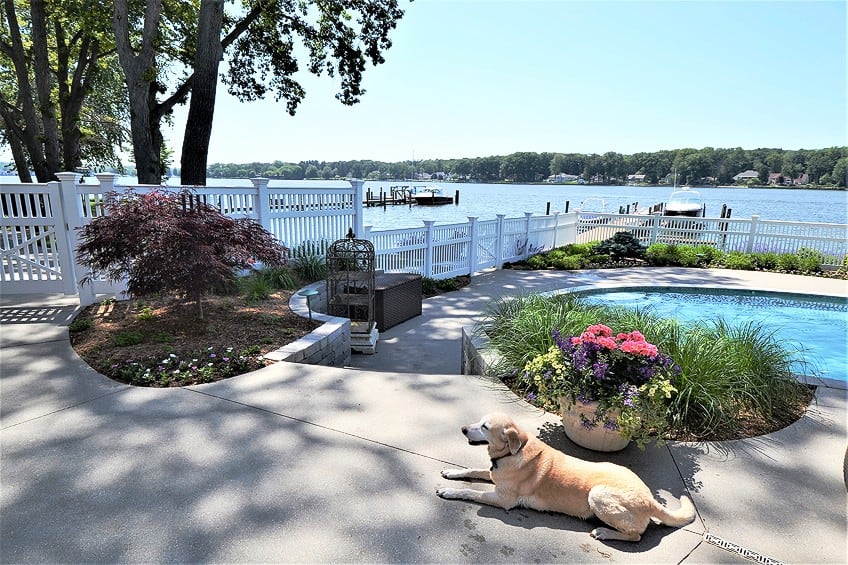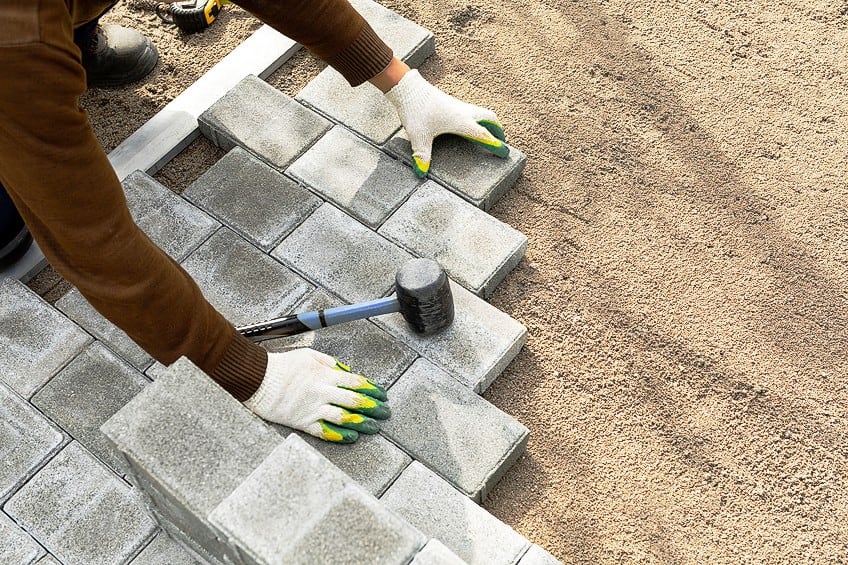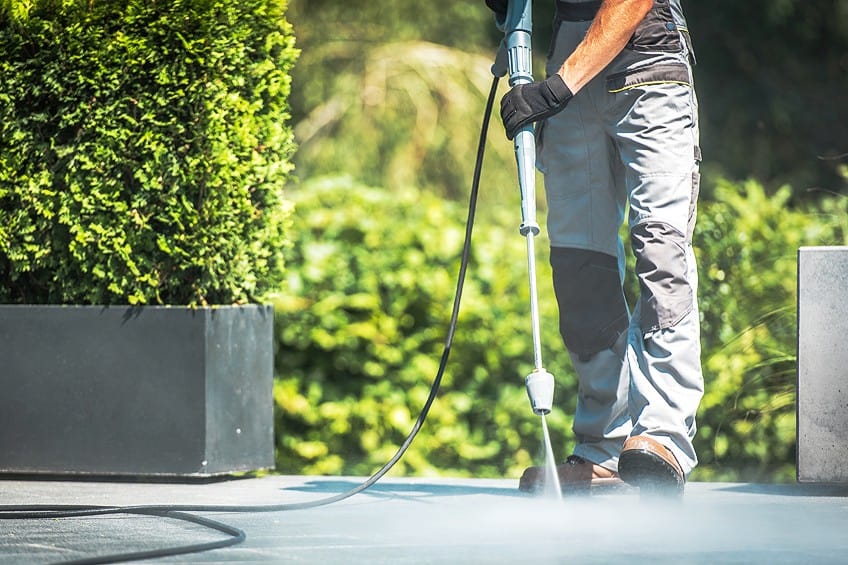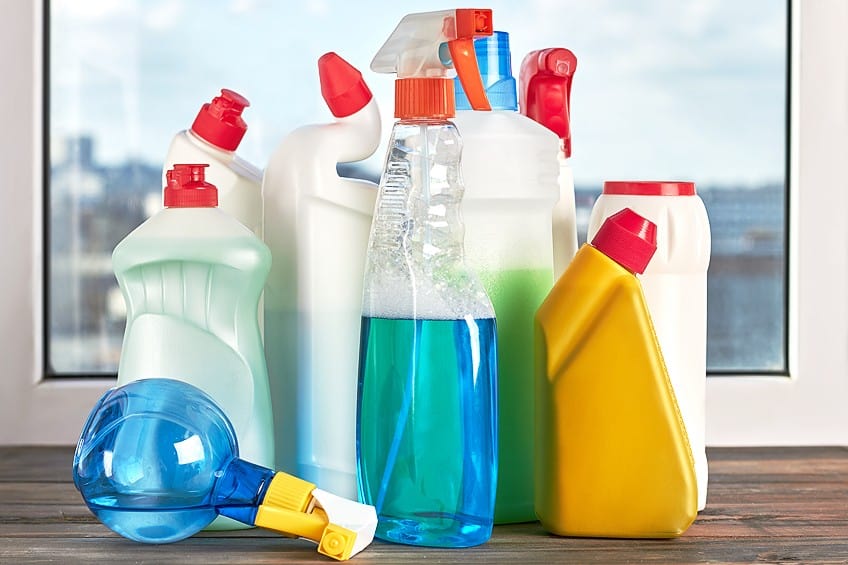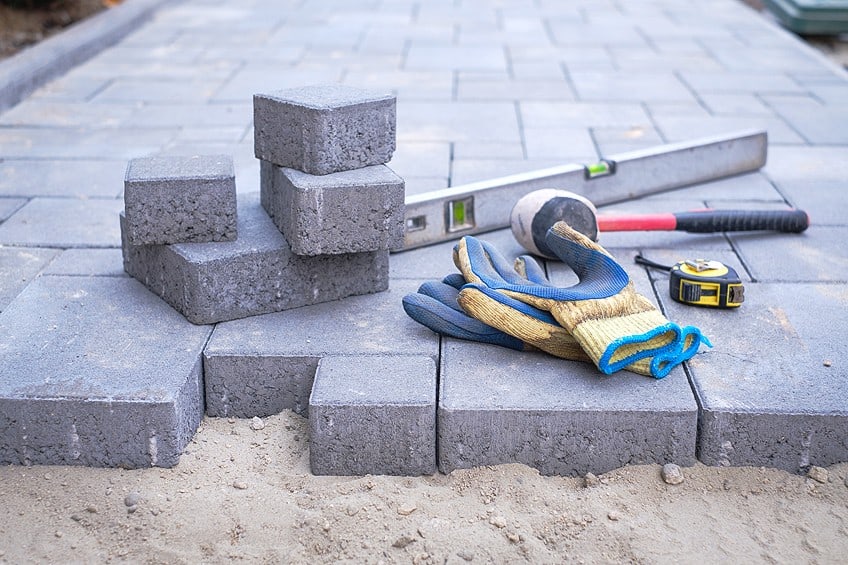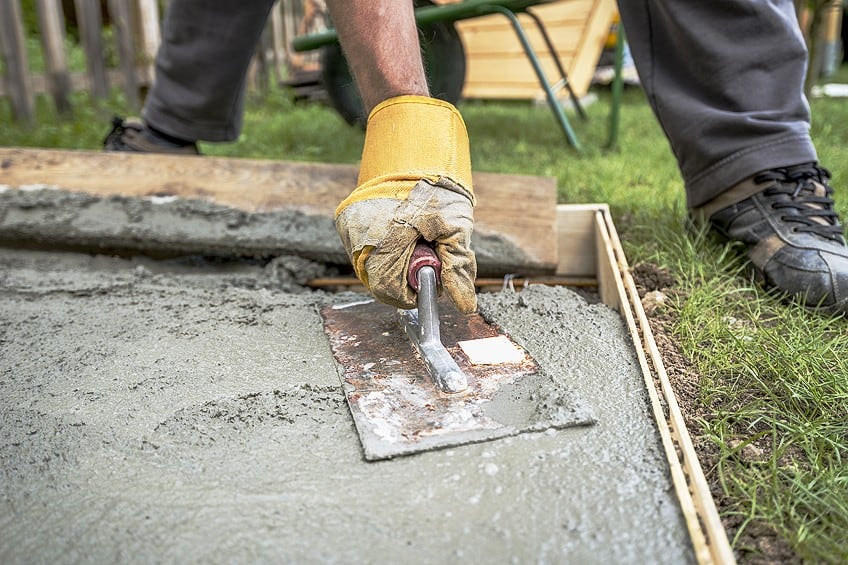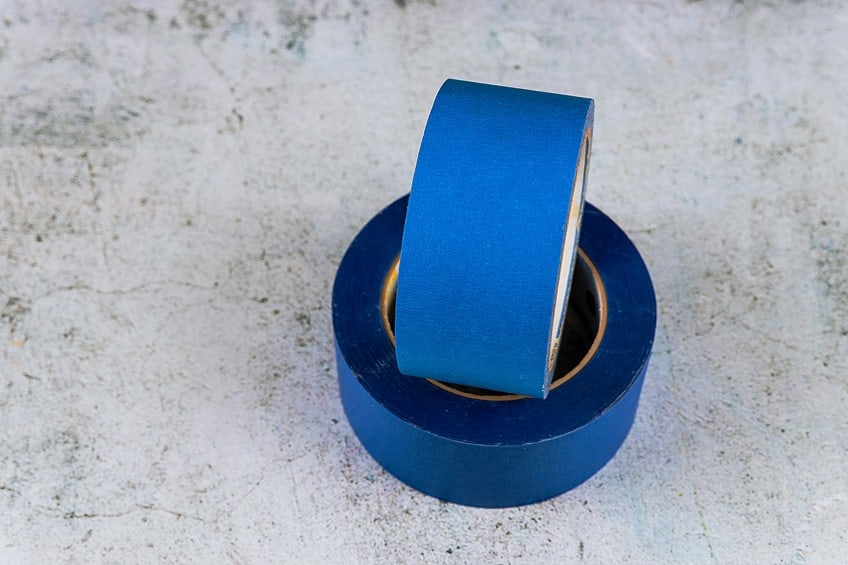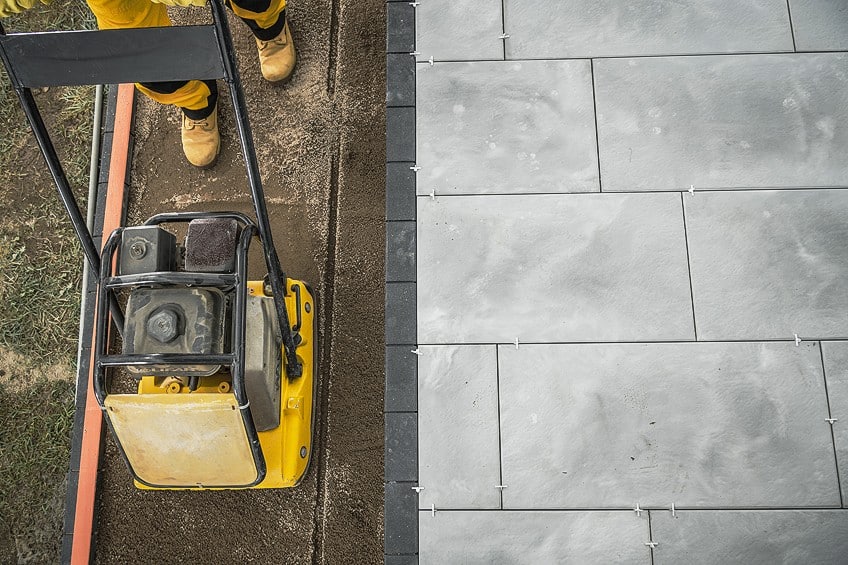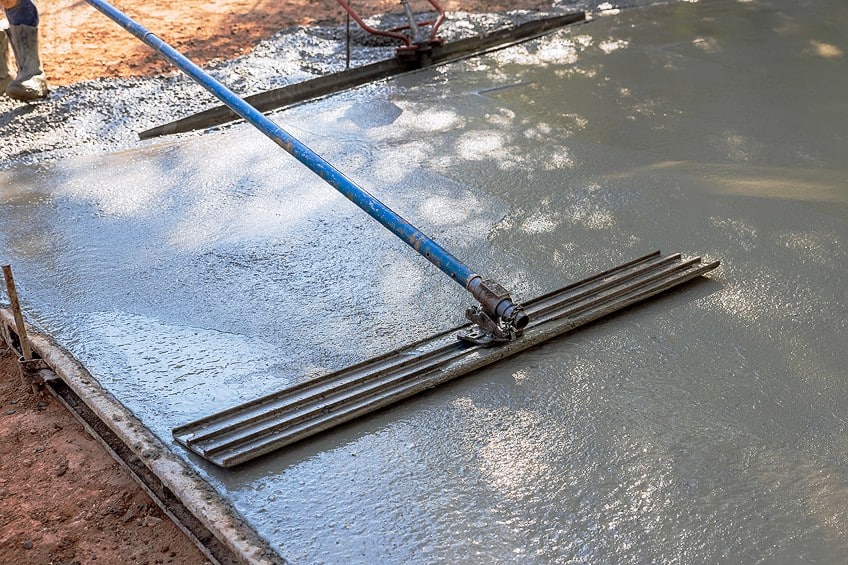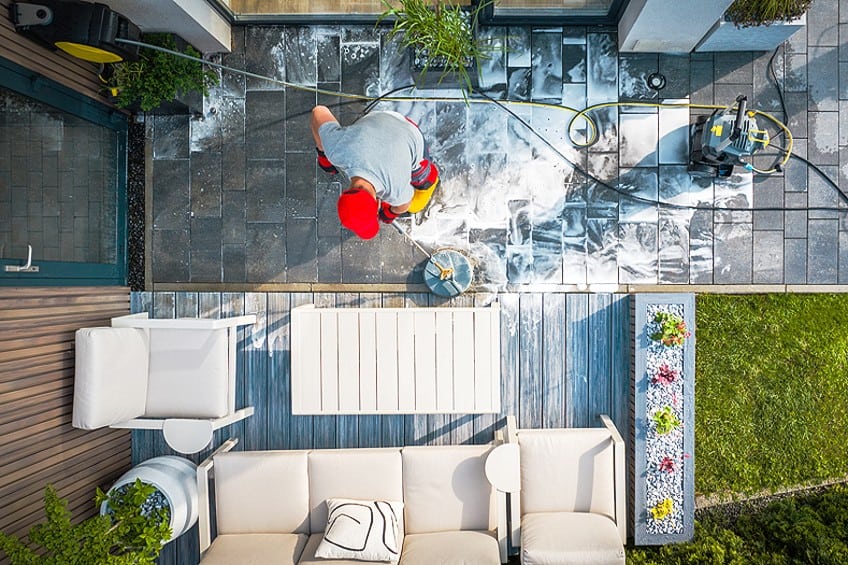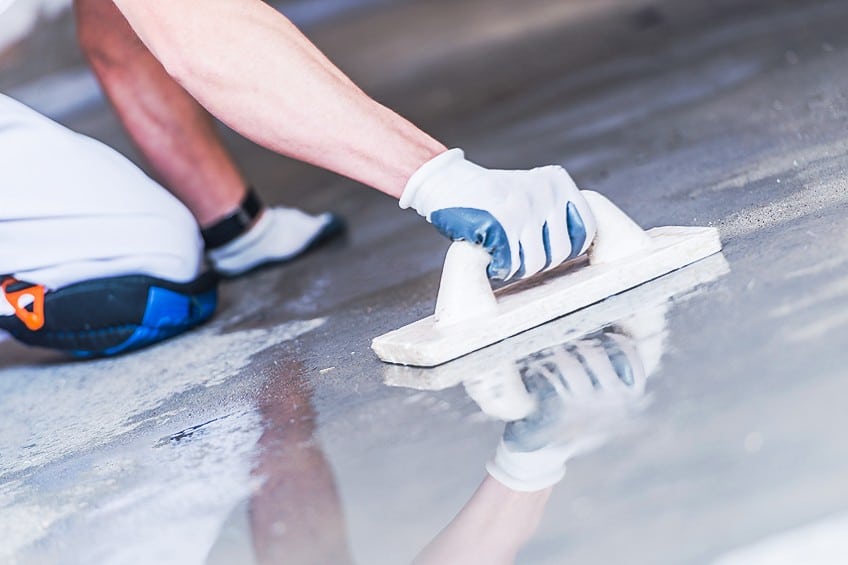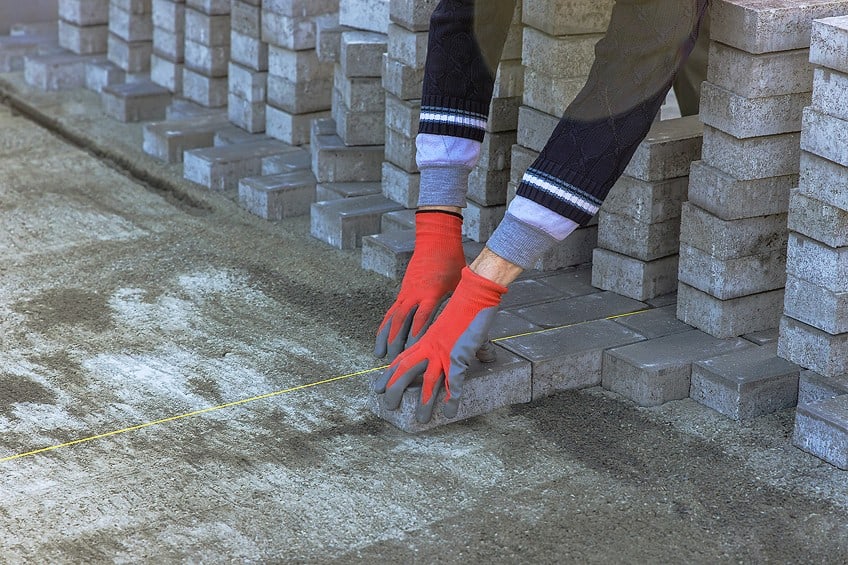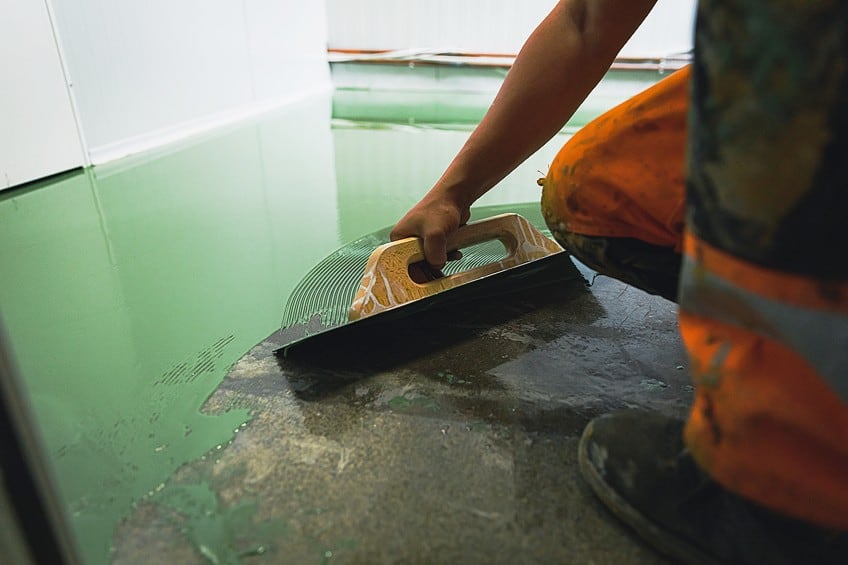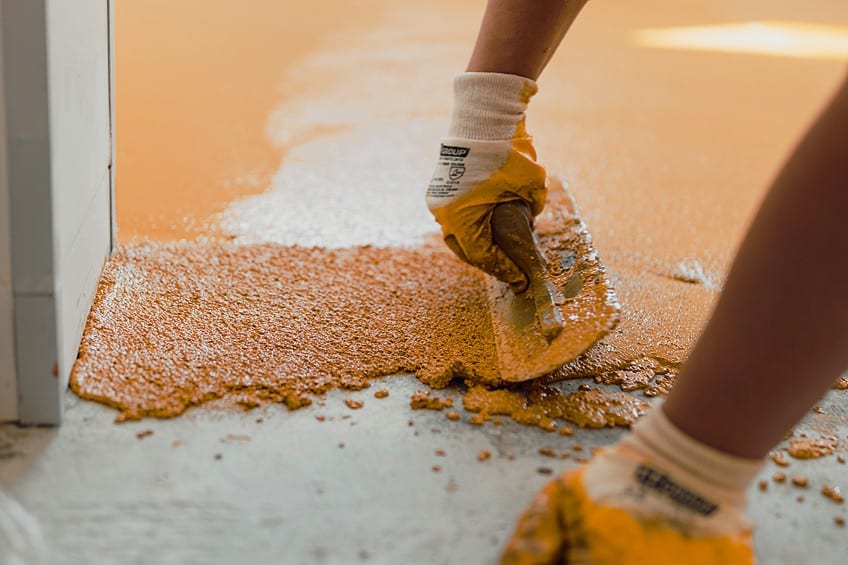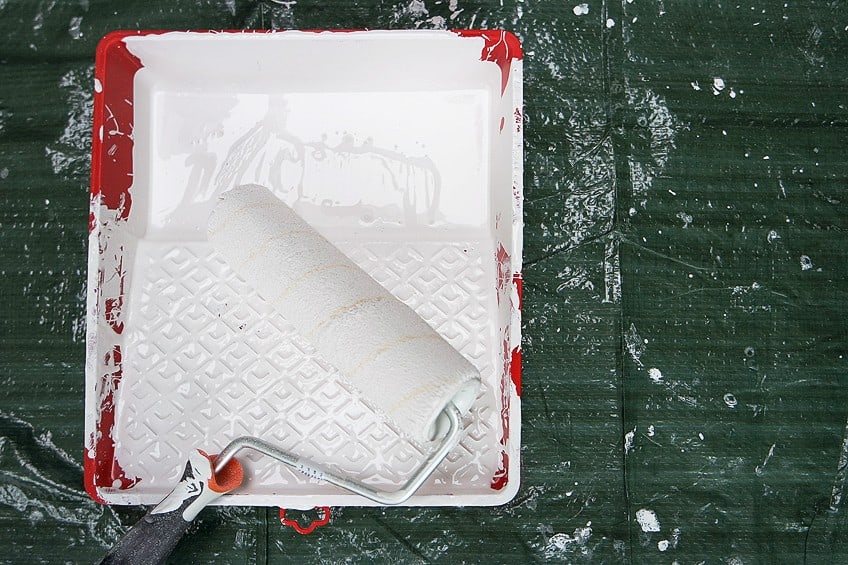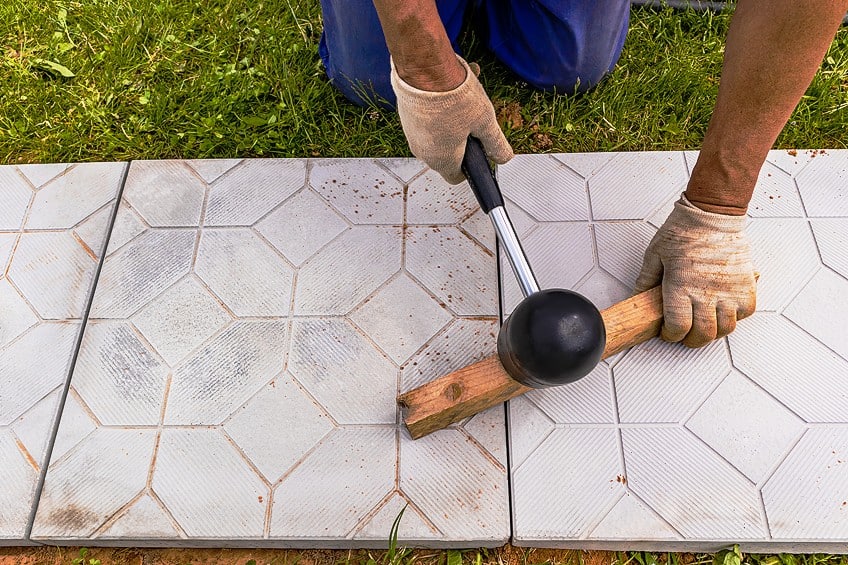How to Paint Concrete Patios – Transform Your Patio
This post may contain affiliate links. We may earn a small commission from purchases made through them, at no additional cost to you. You help to support resin-expert.com
Sitting on a patio with your friends and family enjoying a wonderful summer afternoon is one of the best things you can do! However, the novelty is easily ruined if your patio has taken a beating over the years. Breathing life back into your old concrete patio is quite easy, so we thought we’d show you how to paint concrete patios, why it’s a good idea to do so, and what you’ll need to achieve the best result possible!
Table of Contents
Why Is It a Good Idea to Paint Your Concrete Patio?
Before we show you how to paint concrete patios, we thought we’d show you why it’s a good idea in the first place. After all, painting that much concrete can be an intimidating task, but in reality, it’s pretty easy, and if you have the right tools for the job, you should be able to get it done in a weekend either on your own or with some help from friends and/or family.
It Increases Curb Appeal
Painting a portion of your home is sure to draw some attention to your property and stir up some gossip in the neighborhood (in a good way of course). Patios take up a sizable portion of any property, and therefore a freshly painted one can have a huge impact on curb appeal and even resale price should you decide to take your show on the road someday.
Painting concrete patio surfaces is also inexpensive and not too labor-intensive compared to other renovations in and around the home. This means that you get quite a bit of bang for your buck, even if you have the job done professionally. So, if you want to impress a potential buyer or simply improve the look of your home, this is a great place to start.
It Prevents Further Decay and Corrosion
Concrete patios are just that, exposed concrete. If the surface has not been sealed it is essentially at the mercy of the elements, which can lead the surface to degrade over time. In addition to wind, rain, sunshine, and snow, your patio also has to contend with foot traffic, things being moved in and out of the home, and general wear and tear.
This can lead the surface to degrade quite quickly.
Some notable symptoms of a patio that’s seen better days are cracks, dents, plant life growing through recesses, and insects burrowing into exposed pores. Painting your patio affords you the opportunity to nip decay in the bud and add a fresh look to your old patio.
It Can Improve the Safety of Your Patio
Painting concrete patio surfaces doesn’t just have aesthetic benefits. Concrete patios are something of an old-school concept, and just as doctors aren’t allowed to smoke and administer heroin anymore, we have come a long way in understanding and improving safety standards in home construction and renovation too.
Concrete, especially old concrete can be quite slippery when wet. It can also become a safety hazard if too many cracks have formed and made the surface unstable. Painting outdoor concrete patio surfaces allows you to not only repair and seal these cracks but also allows you to increase the surface friction of the surface, preventing anyone from slipping and injuring themselves.
What Do You Need to Paint Your Patio?
Painting outdoor concrete requires some tools in addition to the know-how. To save you some time running around your local hardware store we thought we’d provide you with a comprehensive list of things you will need to ensure that your patio painting project goes off without a hitch. Some of these things are pretty basic, and you might have some of them simply lying around in your garage or storage shed.
A Clean Broom or a Leaf Blower
Before you even begin applying paint, you’ll have to clean off the dirt and debris on your patio. Since your patio is outdoors there will be no shortage of sand, leaves, and other little bits just sitting loose on the surface.
You can give it an initial clean using a leaf blower, or you could use some elbow grease and simply sweep these particles off your patio with a broom.
A Pressure Washer
The cleaning doesn’t stop there though. Now that the surface particle has been ushered off, it’s time to get rid of that deep-seated dirt. You can do so quite easily with a pressure washer if you have one. If you don’t, you could lather up the surface with some concrete cleaner and water and scrub the surface with your aforementioned broom.
Personal Protective Gear
Aside from things you’ll need to prepare your concrete surface, you will also need some gear to protect yourself! When painting and cleaning concrete you will need some rubber boots, gloves, a face mask, and a pair of eye goggles.
Some chemicals used in the preparation process can be harmful to your skin so be sure to gear up before handling them.
A Chemical Sprayer
Remember those chemicals we mentioned earlier? Well, you are going to need something to apply them, and the best tool for the job is a generic chemical sprayer. These are usually sold at home supply stores to assist in the dissemination of insecticides and other chemicals, and they’re also the perfect tool for prepping concrete surfaces with chemicals.
A Brush and Roller or Paint Sprayer
As when painting most other surfaces, you have a choice between using a brush and roller or simply going at the surface with a paint sprayer. Using a brush and roller means that the job will take longer, but it will allow you to pay more attention to detail as you’ll be up close and personal with the surface as you paint. Paint sprayers will get the job done a lot faster, but they can be difficult to manage depending on your level of skill and comfort.
Sprayers also tend to provide a more uniform texture and finish, but they don’t allow you to pay quite the same level of attention to detail as the brush and roller will, so this is something to keep in mind.
Additional Supplies to Purchase
Aside from the tools you will need some supplies in addition to your paint to ensure that your paint adheres to your surface correctly. Here are a few things you can get that will help prepare your surface and ensure your freshly painted patio lasts for years after the new finish has been applied and sealed.
Degreaser
Degreaser is an easy way to ensure that the surface of your patio is clean and ready to receive paint. Particles tend to break down in concrete patios over time, and as a result grease, dirt, and grim can get trapped in the crevices of your patio.
Some degreaser is the most efficient means of ensuring all of these recesses (and the surface of your workpiece) are thoroughly cleaned out.
Concrete Caulk Sealant
If you’ve remodeled a bathroom in your lifetime you probably know what the function of caulk is. If you don’t, a caulk is essentially a sealant that is dispensed through a long tube by means of a caulk gun. While the caulk is usually used to seal gaps between walls and bathtubs, concrete caulk can be used to fill in holes in concrete. Concrete caulk can be flattened and sanded before it sets.
Muriatic Acid
To get at dirt, grime, and other foreign particles that have gotten trapped deep beneath the surface of your concrete patio over time, you are going to need some muriatic acid. This will loosen up these foreign particles and cause them to rise to the surface where they will be dissipated.
Be extra careful when using this tool.
Painters Tape
While most people associate painter’s tape with interior painting, it can be used with pretty much any common paint job. This tool is particularly useful if you have exterior trim that you don’t want to damage or any other surfaces that are at risk of accidentally being painted. We recommend springing for the tough stuff if you’re going to be painting outdoors though.
Concrete and Masonry Primer
Aside from the paint itself, the primer is the most important part of the preparation process. Using a high-quality primer ensures that your paint not only adheres to the surface of your patio well but also ensures that the texture and tone will be even once the paint has had a chance to dry and cure.
Exterior Concrete Floor Paint
The paint you choose for your patio will be visible for a long time, so we recommend choosing a durable formula and a color that won’t look dated in the next few years. Concrete and masonry paint can be expensive depending on the brand and volume you are looking for, so it’s best to shop around and check out reviews before you commit to one.
Slip-Resistant Concrete Paint Additive
Remember that surface friction we were talking about earlier? It’s a pretty bad idea to have a perfectly flush surface with nothing to provide grip to the feet of you and your loved ones. Adding a bit of this to your new paint before applying it to your surface should reduce the probability of someone going to the emergency room any time soon.
Concrete Sealer
Finally, we recommend sealing the surface of your patio before making use of it. Concrete sealer is usually pretty reasonably priced and you should be able to get your hands on some at any home improvement store or online.
This ensures that the pores of your concrete are sealed, preventing things like insects, mold, water, and anything else from sneaking in and cracking your newly painted patio.
How to Paint a Concrete Porch
Okay, it’s finally time for you to learn how to paint concrete porch surfaces. Before you start wildly slashing paint across your porch though, let’s have a look at how to prepare your surface correctly so that your paint job doesn’t fall away at the first sign of rain. Be sure to wear all your protective gear during both the preparation stage and the painting stage.
Prepare Your Surface
The preparation stage when painting a porch is very important. How well you prepare the concrete will determine how well your paint adheres to the surface and how even your finish looks once the paint has dried and cured. Here are a few steps you can follow to ensure that you achieve the best finish possible when painting a concrete porch.
Sweep or Use compressed Air to Clean the Surface of Your Patio
The first step in preparing your patio is to get rid of any surface dirt. As we mentioned previously you can either go about this by using a good old-fashioned broom or you could use an air compressor. This should remove most of the loose sand and dust from the surface of your porch.
Simply sweep or blow from one end to the other to achieve the best results.
Pressure Wash the Surface of Your Patio
This is easy. All you need to do is load some detergent or pure water into your pressure washer and begin spraying. As you did when you were sweeping, pick an end to start at and work your way to the other. The goal here is to remove any dirt and grim in the recesses of your porch, so be sure to be as thorough as possible.
If you cannot get your hands on a pressure washer you could simply use your broom again. Lather the surface in detergent/ concrete cleaner and scrub it using a broom. This should loosen the dirt lying in little crevices and raise it to the surface. Then all you need to do is sweep it off your patio and allow it to dry completely.
Repair Cracks or Damage in Your Patio
This part can take some time, but it is absolutely necessary to paint your patio. Get your concrete caulk and use it to fill in any gaps on the surface of your patio. Simply fill in the cracks using the concrete caulk, ensuring the caulk fills in the entire gap and allows it to rise just past the surface. Repeat this process until all of the cracks have been filled.
Once the cracks in your patio have been filled allow the caulk to set and harden as recommended by the manufacturer.
Next, you can use sandpaper or a manual wire brush to remove any excess caulk from the surface of your patio. Sweep away any excess once you’ve completed it. If your patio has too many cracks and is structurally unsound, we recommend having it repaired and/or filled professionally.
Etch the Concrete
Next, you will need to etch the concrete. Ensure that you have all your protective gear on and pour some of the water out into the plastic spray bottle. Mix the water with some muriatic acid as indicated in the instruction and begin spraying the surface of your concrete. Allow the acid to do its thing for a while (roughly 10 minutes). Once the acid has etched up the surface well, neutralize the acid using some water from a hose and allow the surface of your patio to dry completely before attempting to move on to the next step in the painting process.
Seal the Surface of Your Patio
Sealing the surface of your concrete is easy. Grab your sealer, pour some out into a paint tray, dip in your roller, and get to sealing. If you have a railing or other parts of your patio, you’re afraid of getting sealer on, simply cover them up with painter’s tape. Start at one end of the patio and work your way to the other end, ensuring you don’t miss any spots in between.
Allow the sealer to dry as indicated by the manufacturer on the packaging and/or instructions attached.
Sand the Surface of Your Patio
Now that the patio has been properly sealed, you’re going to rough the surface up a bit. Using some fine grit sandpaper. For this you could either get down on all fours and scrub, get a sanding pad extension used for drywall, or get your hands on a random orbital sander. Regardless of the path you choose, ensure the surface is evenly and lightly sanded before moving on to the painting portion of the process. Don’t forget to sweep away any remaining sealant particles!
Choose the Right Paint
Choosing the right paint for your patio can be a bit confusing. After all, we tend to paint walls and other vertical surfaces more than we paint horizontal ones. We also tend to paint wood and drywall more than we paint concrete or masonry, so let’s have a look at what type of paint is best suited for painting a concrete patio.
Masonry/Stucco/Brick Paint
When it comes to painting a concrete patio there are two options. The first option you have is to use masonry paint. This used to be the go-to option when painting concrete. Masonry paint consists of acrylic resin, solvents, and pigments that allow it to deliver the best color possible all while being incredibly durable.
Masonry paint is not quite as durable as epoxy-based paint though.
Masonry paint tends to be sold in relatively bland colors, and usually provides a fine textured look and feel to the surface of anything you apply it to. While it might not be top of the food chain anymore, masonry paint will still provide you with an incredibly durable finish that is sure to last your patio for at least a decade.
Epoxy-Based Paint
As the name suggests, epoxy-based paint has an epoxy base that has been mixed with pigment and binders that are then added to the mixture. Like conventional masonry paints, they are incredibly durable and provide good color. The key difference between the two is that epoxy paint tends to put up with foot traffic a bit better and handles things like impact and abrasion well. Epoxy-based paints are a great choice when painting outdoor concrete patios.
Epoxy paints tend to provide a granular finish as it’s designed to increase the surface friction of whatever surface you apply it to. The color selection associated with epoxy-based paint is far more diverse, but the overall tone of these colors is similar to masonry paint, so you won’t be missing out on too much if you decide to go with this paint.
Which One Should You Choose?
Objectively speaking, we recommend opting for the Epoxy paint as not only does it provide a decent color and finish, as well as being inherently resistant to all the forces your patio will face. With that being said, epoxy-based paints are far more durable and don’t even have to be sealed if you live in an area with decent weather conditions. Choosing epoxy-based paint also means that you have a wider variety of colors to choose from and increase the surface friction of your patio to prevent anyone from slipping when it gets wet.
This does usually mean that you can’t seal the surface of your patio once it’s applied, but there’s really nothing stopping you from lightly roughing up the surface of the sealer once it’s been applied.
Apply Your Paint
It’s finally time to apply your paint. Grab your brush, roller, paint tray, and paint and ensure that any surfaces that need to be covered are covered before you begin applying your paint. Also, ensure that your patio’s surface is clear of any debris and give it one last sweep before you move on to the first step of the painting process.
Cut in Edges Using Your Brush
Before you paint the primary surface you’re going to want to cut in the edges of your workpiece. Whether it be where the railing meets the surface of the patio or where the patio meets the wall of your home, use your paintbrush to carefully paint these tricky areas and any other that might be a bit too tight for your roller.
You do not have to wait for your paint to dry before moving on to the next step.
Paint the Primary Surface of Your Patio
If you’re excited to learn how to paint concrete porch surfaces, there isn’t really much to it. Once your edges have been cut in, all you need to do is pour some additional paint into your tray, dip your roller in, wipe off any excess, and begin painting your surface. Start at one end and work toward the next. If your porch is large, paint it in sections, just remember to blend sections in with one another as you go along.
Once your porch has been painted, allow it to dry. This should allow you the opportunity to assess whether additional coats are needed, in which case simply repeat the application process starting with cutting in the edges again and then moving along to the primary surface. Once you’re done, allow the paint to dry and cure completely.
Seal Your Patio (Optional)
Once your patio has been painted you have the option to seal it. While it isn’t necessary, it will ensure that the surface is protected from external forces like rain, wind, sunshine, UV light, impact, and abrasion. That being said, it’s a fairly good idea to ensure that the surface of your patio is sealed once it has been painted to ensure its longevity.
Sealing your patio is pretty much exactly the same as painting it.
Pour out some paint into a tray, grab your brush, cut in the edges, paint your primary surface, and allow the sealer to set and cure as indicated on the container or instructions. That’s how to ensure your patio is properly sealed for the foreseeable future. If your patio gets wet in the winter, you could try adding a non-slip layer or simply roughing the surface up a bit before anyone makes use of it.
If you are confused as to why primer hasn’t been used, it can be. There are also dedicated patio paint formulas and colors for you to choose from, but they vary from brand to brand. That being said, it’s a good idea to shop around and see exactly what colors and textures are available to you. If you still aren’t comfortable and feel like you could use some extra guidance, don’t be afraid to check out some reviews online!
Frequently Asked Questions
Is Painting Front Porch Tops Difficult?
The process of painting front porch surfaces is pretty much the same as painting any floor. The surface needs to be cleaned, repaired, primed, painted, and then sealed. The most notable difference between painting concrete and other surfaces is the type of paint, primer, and sealer used to tackle concrete porches.
What Colour Should I Paint My Front Porch?
There are many things that you can do to ensure that the color of your porch is just right. However, the best thing you can do is ensure that the color of your porch matches the color of the rest of your home, or at the very least, compliments it.
What Sheen Is Best for Porch Paint?
Many people believe that satin is the best sheen for things like porches and ceilings. Why, you ask? Satin tends to give just the right amount of shine to these surfaces while not showing any imperfections whatsoever.


